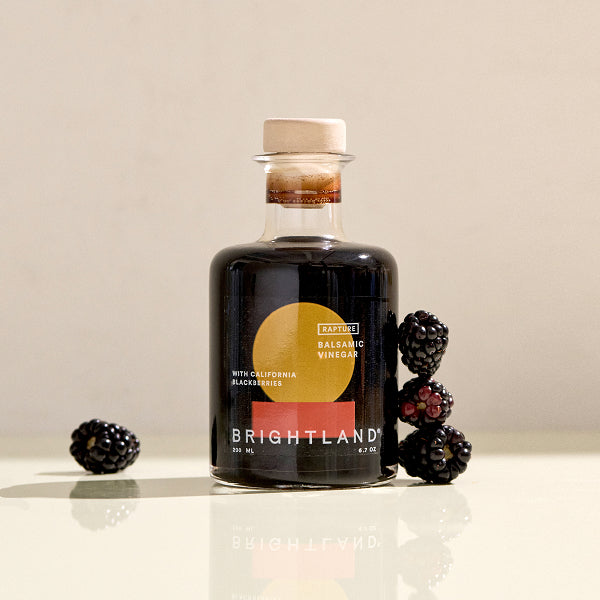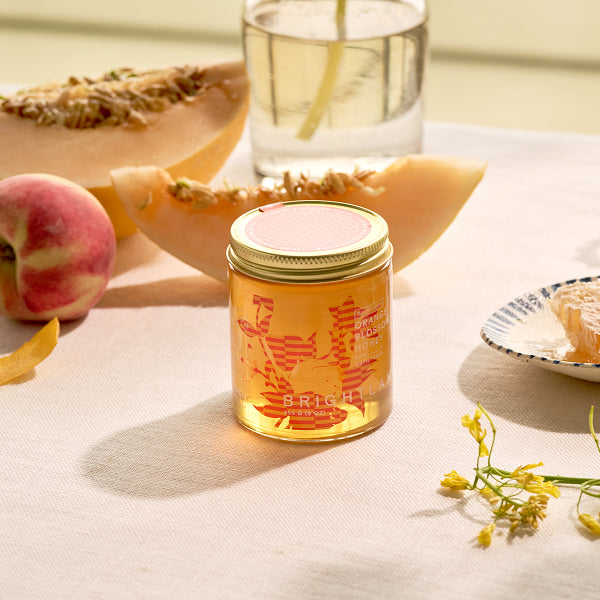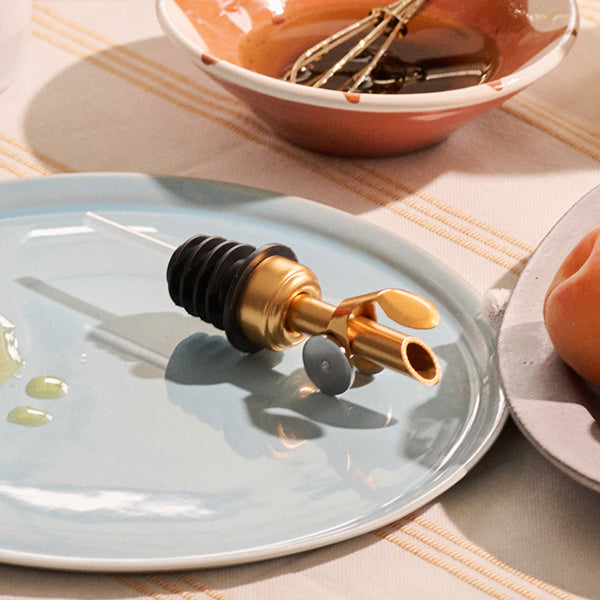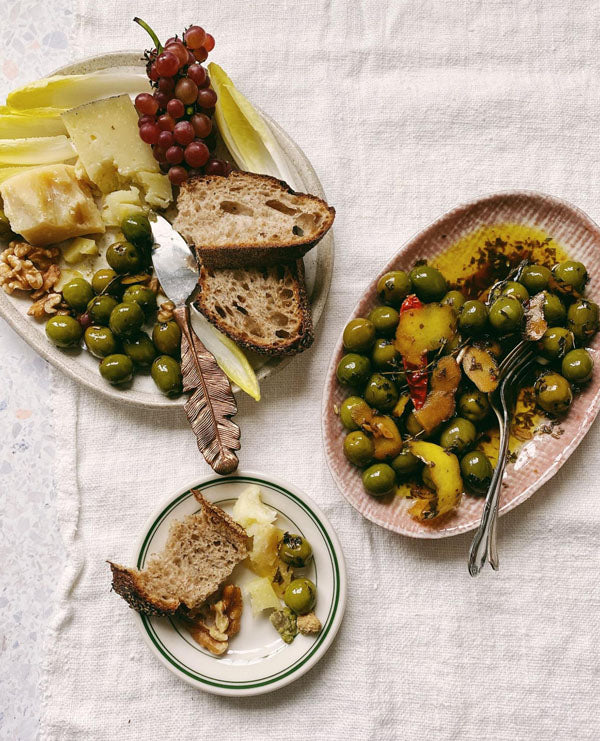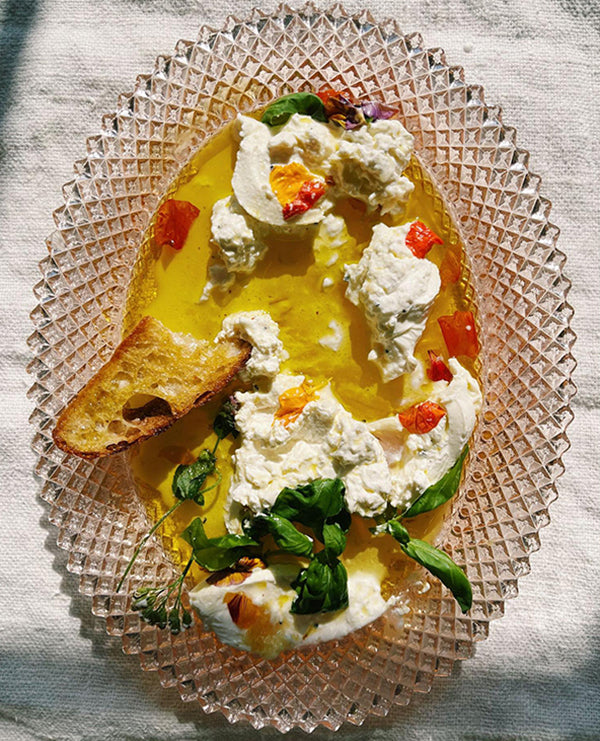[open type="rte"]

Not all olive oils are created equal — and a big reason for that is the many olive varieties that are used to make olive oils. Each olive variety has its own taste and texture, resulting in a unique flavor and tasting notes. In this guide, we investigate how many olive varieties there are, investigate whether black and green olives are different varieties and highlight 12 of the top olive varieties that everyone should know.
[close type="rte"][open type="rte"]
How Many Olive Varieties Are There?
There are hundreds, perhaps thousands, of olive varieties all over the world. However, only about 150 are regularly cultivated for eating and making olive oil. Different olive varieties taste different due to many factors, including soil and weather conditions, when they are harvested, polyphenol content and more.
Technically, olives are a stone fruit (and no, they are not a vegetable). In comparison to other stone fruits like peaches or plums, olives have a very high oil content and a very low sugar content, which is why they taste so different from stereotypical stone fruits. Different olive varieties are often blended into one extra virgin olive oil to achieve the perfect balance of flavors.
Olives are almost 6,000 years old and originated around modern day Turkey and Syria. In fact, olives are likely one of the first fruit trees to be domesticated by humankind. From there, olives spread throughout the Mediterranean into places such as Italy, France, Greece and Spain. As olive cultivation grew more advanced, they spread further around the globe. Each location imparts different characteristics to the olives that are grown there due to soil composition, weather conditions and cultivation techniques.
[close type="rte"][open type="images" small="true"]

[close type="images"][open type="rte"]
California’s Mediterranean-like climate lends itself perfectly to growing this fruit tree. Brightland partners with family farms in California’s Central Coast that grow several olive varieties — including Coratina, Arbequina, Arbosana and Frantoio — to source our delicious olive oils.
[close type="rte"][open type="rte"]
Green vs. Black Olives: Different Varieties?
Perhaps the most visual distinction between olives is their color. Peruse any grocery store shelf, and you will be able to easily sort the green olives from the black ones. There is a common misconception that green and black olives are different varieties, but however logical this may seem on the surface, it is actually a myth. All olives start out as green and then later ripen to become black, purple or another darker color.
Green olives are not yet ripe, and have been harvested before they ripen into black olives. As a result, they usually taste more bitter than their riper counterparts. Thus, olives from the same variety can be either green or black, depending on when they were picked and preserved. Just because olives are two different colors does not necessarily mean that they are from two different varieties. You will need the label to see exactly what variety the olives are, no matter what color they are.
[close type="rte"][open type="rte"]
Olive Varieties Worth Knowing
Here are 12 olive varieties that everyone should know about:

Kalamata
No list of olive varieties would be complete without the Kalamata olive. This olive is ubiquitous and can be found on almost every supermarket shelf — but that does not make it any less delicious. Kalamata olives have a distinct deep, dark purple color and an almond shape that is more pointed at one end. Their skin is tight and shiny and often snaps when bitten into. Kalamata olives have a fruity yet smoky taste and are usually preserved in olive oil, red wine or red wine vinegar to bring this flavor out and add a hint of acidity. Kalamata olives are usually eaten on their own as a snack or used as a main ingredient in Greek salads and tapenades.
Castelvetrano
Alongside the Kalamata olive, the Castelvetrano olive is a classic snacking olive. Unlike the Kalamata, the Castelvetrano is usually picked while still unripe and has a bright green hue as a result. It originated in Castelvetrano, Italy, hence the name. The flesh of this olive variety is meaty yet buttery, and the flavor is mild so it does not overwhelm the palate. If the Kalamata olive is a red wine olive, then the Castelvetrano is a white wine olive, as its flavor complements the bright, crisp, lighter wine perfectly. As an exercise, try eating the milder Castelvetrano alongside the more bold Kalamata olive to compare and contrast their flavors.

Picual
If you have ever tried an olive oil from Spain, the chances are good that it contained Picual olives. Cultivated in the Andalusia region, Picual olives are responsible for up to a third of the world’s olive oil production, thanks to their high oil content (20-27 percent). They have a milder, fruity taste that tends towards sweet instead of bitter or pungent. They also have a pretty high polyphenol count, which is beneficial. Only a minority of Picual olive oil is available as extra virgin — usually it is refined in some ways before getting to the market — but more unrefined options are becoming available as Picual olive oils gain attention.
Coratina
One of Italy’s most popular varieties, Coratina olive trees are very hardy and adaptable. Coratina olives tend to be rounded in shape, but there can be a decent amount of variation in shape from one olive to the next, which can make harvesting more difficult. Coratina olives have a relatively small pit and more olive flesh, which results in a high oil yield of around 25 percent. They also have a very distinct taste that is highly tangy and bitter. As a result, Coratina oil is often mixed with one from a milder variety, such as Frantoio, to balance the flavors out. Coratina olives are also high in both antioxidants and polyphenols, so they are beneficial to your health, and in fact, the high polyphenol content is what gives it its strong, peppery flavor.

Arbequina
Arbequina is another olive variety from Spain that is frequently used in olive oil production as well as eaten as table olives. Arbequina olives are easily harvested — especially by mechanical processes — thanks to their small, uniform shape, which is one of the reasons they are so popular. They also have a relatively high oil content and the trees adapt well to different environments. Arbequina olives and the resulting oil have a mild, buttery flavor that is easy to consume and very versatile. The oil may be mixed with more pungent or bitter oils to add a kick to the flavor.
Arbosana
Similar to the Arbequina, the Arbosana is an olive variety that originated in Spain but now thrives in California. Arbosana olives mature about three weeks later than Arbequina, and this extra time gives the olives a more peppery and pungent taste that results in a bolder olive oil. Arbosana trees are small in size but produce large amounts of fruit, making them ideal for olive oil harvesting. Arbosana olives also contain high amounts of polyphenols, which provide added health benefits in addition to a delicious taste.
Cerignola
If you have ever eaten a stuffed olive, then it was probably a Cerignola variety. These extra large green olives still have plenty of flesh left over even after the pit is removed, making them the perfect vehicle for stuffing with blue cheese, garlic, pimento, jalapeno or whatever your heart desires. On their own, Cerignolas have a crisp and buttery taste that pairs well with a variety of foods, another reason they are such popular snacking olives. While they taste excellent stuffed, we also enjoy eating them in their own right.
Niçoise
Niçoise olives come not from Italy or Spain, but from France. They are featured in many signature French Riviera dishes, including tapenade and salad Niçoise, and are also eaten alone as a snacking olive. They are picked while ripe and black and then cured in brine to intensify the savory, pungent taste. Herbs may also be added for an even more complex flavor. They are mostly closely compared to the more widely available Kalamata olives, and Kalamatas can be substituted for them in a recipe if you cannot get your hands on proper Niçoise olives.
Nyon
Nyon olives can be identified by their small size, slightly wrinkled skins and jet black color. They have a sweet and fruity flavor and are juicy when bitten into. They are often dry cured and then brine cured to produce a unique flavor and pair well with herbs and olive oil. Nyon snacking olives are more rare — and thus more expensive — than their fellow French variety the Niçoise, so they may be more difficult to find. However, if you are looking to expand your olive palate, then they are well worth tracking down at least once.

Frantoio
Frantoio olives have several characteristics that make them ideal for growing. For one, they have a very high oil yield (usually between 23-28 percent). When conditions are mild, Frantoio trees grow well, but they also tolerate hotter and colder conditions better than some other varieties — which is one of the major reasons they have been exported to six different continents. Frantoio olive oil is fruity with a pleasant edge of bitterness that does not overwhelm, making it a very versatile oil, ideal for infusing with herbs and aromatics. At Brightland, we use Frantoio olives for our infused olive oils for the perfect balance.
Mission
Originally thought to be of Spanish origins, Mission olives now appear to have originated in America and have been grown in California since at least the 1700s. Mission olives are usually pressed to make olive oil but they may also be picked and cured for snacking while ripe or unripe. The black ripe olives are cured in oil while the green ripe olives are cured in brine to enhance their flavors. Mission trees produce relatively smaller olives, resulting in both an olive and an oil that is more mild and buttery tasting. Cured Mission snacking olives also tend to have grassy and bright notes in their flavor palettes.
Picholine
Picholine olives are known for their elongated shape, which some people compare to a torpedo. They are picked while still green and cured in brine, resulting in a grassy taste with a crisp and crunchy texture. They are most often used as a cocktail olive in martinis and other drinks, but may also be incorporated into recipes or eaten alone as a snacking olive. They also pair well with a crisp white wine due to their refreshing texture and make a unique addition to the typical cheese board.
[close type="rte"][open type="images" count="1"]

[close type="images"][open type="rte"]
Ready to experience the difference between olive oil varieties? Browse our olive oils today and get them shipped straight to your home for hassle-free shopping. All of our Brightland olives are grown and harvested on small family-run farms in California for the ultimate in quality control. Order our products today and you will taste the difference of our extra virgin olive oils.
Image Credits
oxygen_8/Shutterstock.com
Maren Winter/Shutterstock.com
jessicahyde/Shutterstock.com
TanitJuno/Shutterstock.com
[close type="rte"]



